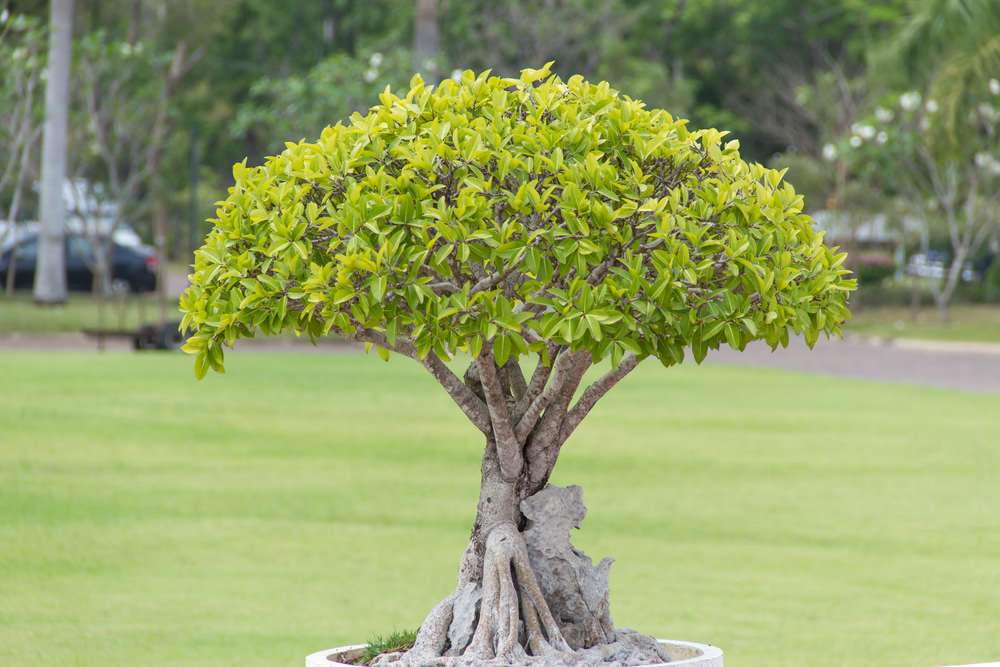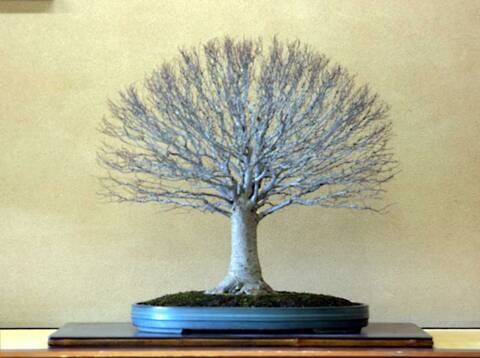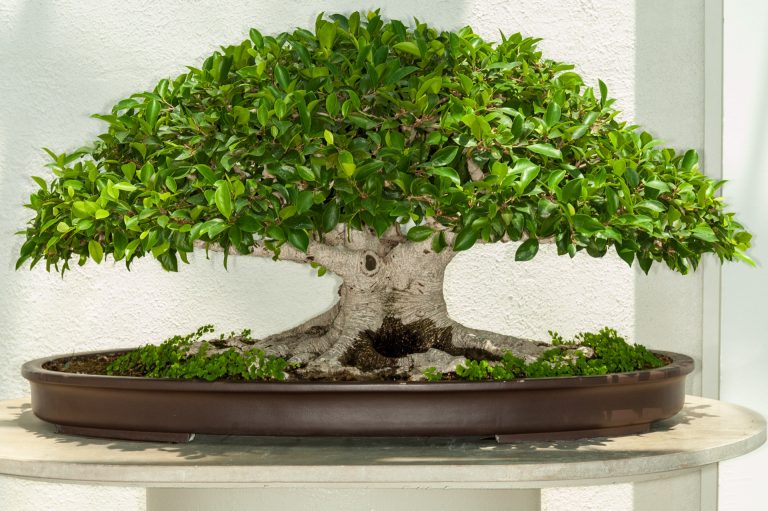The art and practice of bonsai cultivation offers nature lovers a unique opportunity to express their creativity while nurturing a living organism. Bonsai, which grew out of Asian cultures, has diversified into an array of styles, one of which is the Hokidachi, or Broom Style Bonsai.
To master this style, one must first immerse in the foundations of bonsai gardening, understanding different tree types, the sunlight, water, and soil they require, and the basics of tree care. Then begins the exciting journey of crafting a Broom Style Bonsai, reveling in its distinct attributes, identifying suitable species, and skillfully implementing the various stages of shaping and pruning. Lastly, the lifelong commitment of maintaining the Broom Style Bonsai ensures its health and the preservation of its designed shape, necessitating knowledge in watering routine, disease diagnosis, and pruning techniques.
Understanding Bonsai Basics
Understanding Bonsai Basics
To start with, bonsai gardening requires an understanding of the different types of bonsai trees. There are various types, ranging from deciduous, like the maple or elm, to evergreen varieties such as junipers and pines. Each type has its own preferences for sunlight, water, and soil conditions.
Sunlight is an essential factor for the health of your bonsai. Most varieties prefer bright, indirect light. However, some require some amount of direct sunlight every day, like the juniper, while others such as the ficus do well in shaded areas. Therefore, it is crucial to research the specific sunlight needs of your chosen bonsai type.
Watering requirements also differ among the different types of bonsai. Some trees are more drought-tolerant than others, while some need to be consistently moist. Generally, most bonsai trees should be watered when the topsoil feels slightly dry to touch. Overwatering can lead to root rot – a common problem in bonsai gardening.
Soil type is another critical factor to consider in bonsai gardening. The majority of bonsai trees prefer a well-draining soil mix which has good water retention properties, is rich in organic matter, but also allows excess water to drain quickly. Several commercial bonsai soil mixes are available, or you can create your own mix at home using components like akadama, pumice, and organic compost.
Creating a Broom Style Bonsai (Hokidachi)
The Hokidachi style, commonly known as the ‘broom style’, is popular for deciduous trees with fine branching, such as elms or maples. To create this style, follow the steps below:
- Start by choosing a young, healthy deciduous tree with an upright stem and a symmetrical branch spread. The trunk should be straight and tapering, without any visible roots.
- Prune the tree back to the desired height – this will become the top of your bonsai ‘broom’. The height should ideally be six times the width of the trunk.
- Remove all branches from the bottom one-third of the trunk to encourage growth up top. This will form the ‘handle’ of the broom.
- Selectively prune the remaining branches. Keep those that contribute to the broom’s symmetry and remove those that are too thick, are growing downward, or are too close together.
- Over time, continue to prune new growth to maintain the broom shape. Encourage horizontal growth over vertical for a fuller appearance.
Creating a Hokidachi style bonsai requires patience and dedication, as it can take many years for the tree to fully develop into the desired shape. However, with proper care and attention, the end result can be a stunning addition to your bonsai collection.

Creating a Broom Style Bonsai (Hokidachi)
Identifying Hokidachi Bonsai Characteristics
Hokidachi, also known as the “broom style,” is a common style for bonsai trees. It’s characterized by a straight, upright trunk with branches extending out at around the same level, creating a triangular or conical shape that is symmetrical and balanced. The style imitates mature trees in nature, especially deciduous species like elms and maples that have a broad canopy in relation to the trunk’s height.
Choosing the Suitable Species for Hokidachi Bonsai
Not all species are suitable for the Hokidachi style. Ideal candidates are deciduous trees that have petite leaves and an innate growth pattern of symmetrical branching. Zelkova, Elm, and some Maple species, such as the Trident Maple(Acer buergerianum) are commonly used. The key trait is that these trees naturally produce branches in a pattern that can be pruned and shaped into the broom style.
Steps to Create a Broom Style Bonsai (Hokidachi)
A crucial aspect of creating a bonsai in this style is patience. The process of pruning, shaping, wiring, and subsequent care can take several years, but the result is rewarding.
- If you’re starting with a young tree (also called a “pre-bonsai”), begin by pruning the trunk to the desired height, typically six to eight times the size of the trunk diameter.
- The lowest branches should be the longest, and then progressively shorten as they ascend the trunk. Prune branches that seem out of place or do not contribute to the symmetrical silhouette.
- After pruning, the tree should be allowed to recover for a few weeks. During this time, it’s important to provide optimal care with proper watering and positioning with appropriate sunlight.
- Once the tree has recovered, start shaping the tree by applying copper or aluminum bonsai wire to the branches. Bonsai wiring is a deep topic in itself, but the idea is to gently bend and shape the branches to create an outward and upward shape.
- Monitor the tree regularly to ensure the wire does not dig into the bark and damage the tree. Rewire the tree as necessary as it grows and continues shaping.
- Regular pruning will become necessary to maintain the shape and size of the bonsai. Prune new shoots back to two leaves once they’ve developed six to eight leaves.
Remember, bonsai creation and care are as much an art as a science. The key is to observe, learn from nature, and imitate it to the best of your ability in your bonsai design.
Maintaining Your Hokidachi Bonsai

Understanding Your Hokidachi Bonsai
The Hokidachi bonsai, also known as the broom style bonsai, requires consistent care and attention to maintain its health and unique shape. In order to maintain your bonsai properly, it is important to understand its specific requirements.
Watering Your Hokidachi Bonsai
One of the key maintenance tasks is watering. To determine when your Hokidachi bonsai needs water, touch the soil. If it is dry to the touch, your bonsai needs watering. Keep in mind northern climates where you may keep your bonsai inside during winter will result in drier soil, consequently, you might have to water it more often.
Signs of Pests and Disease
Pests and disease are common issues for any bonsai tree. Regularly inspect your Hokidachi for signs such as discolored leaves, spots, or unusual growth. Pests such as aphids, spider mites, and scale can often be seen on the underside of leaves. If you notice any of these signs, promptly treat your bonsai with a suitable pesticide or fungicide, and isolate it from other plants to prevent the spread of the issue.
Pruning Your Hokidachi
Proper pruning is crucial to maintain the broom style of your Hokidachi bonsai. It involves trimming back new growth to preserve the dome-like shape that characterizes the broom style. Trim excess branches that detract from the overall shape of the tree and create clutter in the silhouette. Also, ensure that you rotate your bonsai regularly to expose all parts of the tree to even sunlight.
Trimming Techniques
Trimming techniques play an essential role in maintaining this specific bonsai style. The technique requires careful trimming of the top and side branches to maintain a symmetrical shape. It’s advisable to use clean, sharp tools to ensure clean, precise cuts that promote healthy growth and minimize the risk of disease.
Overall Maintenance
Regular care of your Hokidachi bonsai includes not only pruning and watering but also proper fertilizing and repotting as necessary. The soil nutrients deplete over time, so apply a balanced bonsai fertilizer during the growth season. Also, bonsai trees become pot-bound over time, so repot your Hokidachi bonsai every two to five years, depending on the age and size of the tree.
Remember, patience and attention to detail are your most powerful tools when caring for a bonsai. With diligent care, your Hokidachi bonsai will continue to provide tranquility and organic beauty for years to come.

The rewards of creating a Hokidachi are richly satisfying on many levels. Owning a Broom Style Bonsai compels one to embrace an attitude of patience and mindfulness, attentiveness to subtle changes in the tree, and skill in dealing with challenges that come its way. The tree continues to grow and change with time, providing a dynamic canvas for the bonsai practitioner to work on. By deeply understanding the needs and characteristics of your carefully chosen species, introducing learned shaping techniques, and meticulously maintaining it, your Hokidachi Bonsai will stand as a charming testament of nature’s resilience and your horticultural prowess.
